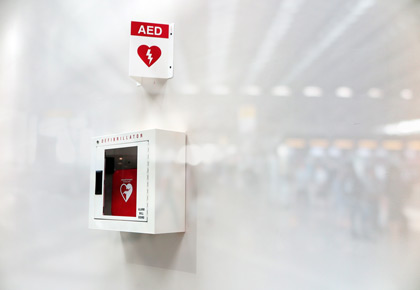
All board member of condominium or homeowners associations need to ensure the safety and well-being of their residents. That includes staying on top of changes in rules, regulations, codes, and ordinances that affect your community. For board members living in Broward County, it’s imperative to know the latest amendments to the Florida Fire Prevention Code, which include new requirements regarding Automated External Defibrillators (AEDs) and Bleeding Control Kits (BCKs).

According to the Broward County Board of Rules and Appeals, they have recently adopted amendments to the Florida Fire Prevention Code that apply to newly constructed and existing buildings. The new provisions, approved with an effective date of December 19, 2022, provide the minimum requirements to safeguard the public health and general welfare of Broward County residents. Buildings have 18 months – from April 24, 2022 (the original date of the amendment proposal) – to October 23, 2023, to be in compliance.
The following will help you understand the amendments and navigate the updated requirements to keep your community safe and compliant.
The amendments relate to new requirements regarding the placement of Automated External Defibrillators (AEDs) and Bleeding Control Kits (BCKs) (formerly known as Stop the Bleed Kits) in buildings. AEDs are portable devices that can save the life of a person with sudden cardiac arrest. When a person’s heart stops beating unexpectedly, rescuers can place an AED on the person’s chest to deliver an electric shock to the heart to restart it.
BCKs contains the necessary items to control severe bleeding after a traumatic injury.
The new ordinance applies to the following locations, which may or may only apply to some associations:
“Our goal is to provide boards with the information they need to help them meet the safety requirements,” said Anthony Gragnano, vice president at FirstService Residential. “Of course, boards should consult with their professional property management company as well as their association’s attorney to determine whether the modified ordinance applies to their building and how to proceed to be in compliance by October 2023.”
Your community must meet the following AED and BCK placement requirements:
After purchasing AEDs and BCKs, your community association must verify with the county that the devices are valid for operation. To do this, you must notify the fire chief in writing. The written notification must contain the following:
All AEDs and BCKs will also need to be periodically inspected and maintained by the association to ensure they are working properly.
AED devices should contain adult and pediatric pads, and BCKs should include at least:
If more than 500 residents live in your community, you must have a large occupancy BCK, which contains at least:
In the event that an AED or BCK needs to be removed for repair, the association or manufacturer must provide a replacement.
Yes. Training is required to use both. Your community association must install and provide the necessary training in accordance with the manufacturer's recommended requirements and the ordinance. The training should consist of a class provided by an organization that is locally approved by Broward County or one that is provided by a nationally recognized organization such as the American Heart Association, the American Red Cross, or the National Safety Council.
AED training should follow a standardized curriculum and should include at a minimum the following topics:
The standardized curriculum for BCK training should include, at a minimum, tourniquet application and use.
Users should submit proof of completed AED and BCK training to Broward County. Users of AEDs and BCKs should also be re-trained or re-certified as required by the manufacturer and the certifying agency.
Your professional management company should work with your association to ensure the right people complete the necessary training required and that your community’s AEDs and BCKs are placed according to Broward County requirements.
“The proper training is critical for users across Broward County – not only to ensure compliance, but more importantly, to help keep our residents safe,” said Kim Pinillos, vice president at FirstService Residential.
Anyone who uses an AED in an emergency is required to contact the county by dialing 911 immediately before, or immediately upon use. After using the AED or BCK, the county may conduct a quality assurance review. This would include gathering clinical data and information from the person who used the AED or BCK.
Code violations, including failure to supply the AEDs and BCKs, could result in fines and, in some cases, criminal penalties, so you’ll want to ensure your community complies.